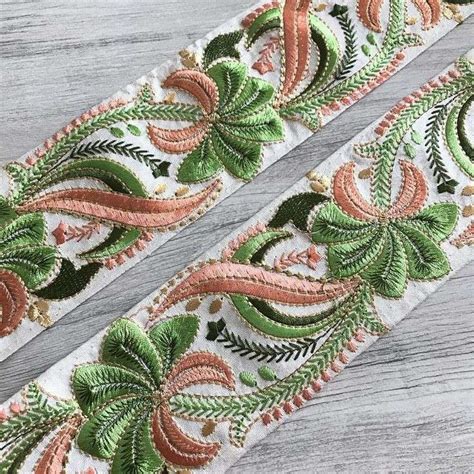India is a leading manufacturer and exporter of lace worldwide, renowned for its exquisite designs, intricate craftsmanship, and competitive prices. Lace has been an integral part of Indian textiles for centuries, and Indian lace manufacturers have consistently evolved to meet the demands of the global market. This article provides a comprehensive overview of the Indian lace industry, covering market trends, key players, and emerging applications.

Market Overview
The global lace market is estimated to reach USD 21.3 billion by 2027, growing at a CAGR of 4.5% during the forecast period (2023-2027). India holds a significant share of this market, driven by factors such as:
- Skilled workforce: India has a large pool of skilled workers with generations of experience in lace-making techniques.
- Raw material availability: The country has access to high-quality cotton, silk, and synthetic fibers used in lace production.
- Government support: The Indian government provides incentives and support to the lace industry, encouraging innovation and investment.
Key Players
India is home to numerous lace manufacturers, ranging from small-scale artisans to large-scale exporters. Some notable players in the industry include:
| Manufacturer | Location | Specializations |
|---|---|---|
| Chikan Emporium | Lucknow | Chikankari lace |
| Kathiawar Silk Mills | Surat | Silk lace |
| Lace World | Mumbai | Synthetic lace |
| Nandan Textiles | Jaipur | Hand-embroidered lace |
| Rashi Silk House | Varanasi | Banarasi lace |
Lace Types
Indian lace manufacturers produce a wide variety of lace types, including:
- Traditional lace: Chikankari, Banarasi, Gota Patti, Kasuti
- Embroidered lace: Machine-made and hand-embroidered lace with intricate designs
- Chemical lace: Created using chemical etching techniques to create patterns in the fabric
- Embellished lace: Lace adorned with beads, sequins, or other decorative elements
- Stretch lace: Lace with elastic properties for a comfortable fit
Applications
Lace is used in a diverse range of applications, from traditional garments to modern fashion and accessories.
- Garments: Bridal gowns, evening wear, blouses, skirts
- Home textiles: Curtains, tablecloths, bedspreads
- Accessories: Gloves, hats, scarves, jewelry
- Novel applications: Lamp shades, candle holders, wall art
Emerging Applications
Lace manufacturers are constantly innovating and exploring new applications for lace. Examples include:
- Architectural accents: Decorative lace panels for walls, screens, and ceilings
- 3D lace: Three-dimensional lace structures for sculptures and installations
- Wearable technology: Lace integrated with sensors and electronics for health monitoring and fashion-forward designs
- Medical applications: Antibacterial and wound-healing lace dressings
Pain Points and Motivations
Lace manufacturers face several challenges, including:
- Competition from low-cost producers: India competes with countries like China and Vietnam, which offer lower production costs.
- Rising raw material prices: The cost of cotton and other fibers has increased due to factors such as global supply chain disruptions and climate change.
- Skill shortage: The industry faces a shortage of skilled lacemakers, particularly in traditional techniques.
Motivations for lace manufacturers include:
- Expanding global markets: India has a growing export market for lace, particularly in regions like Europe and North America.
- Customer demand: Consumers increasingly seek unique and sustainable lace products that align with their values.
- Innovation and technology: Lace manufacturers are embracing new technologies to improve efficiency, reduce costs, and create innovative designs.
Common Mistakes to Avoid
Lace manufacturers and customers should avoid these common pitfalls:
- Lack of quality control: Ensure products meet quality standards and customer specifications.
- Limited design innovation: Stay abreast of market trends and offer unique and original lace designs.
- Inefficient production processes: Optimize production processes to minimize waste and improve efficiency.
- Poor customer service: Provide excellent customer service to build long-term relationships.
- Lack of marketing and branding: Effectively market and brand products to reach target audiences.
Tables
Table 1: Global Lace Market Size
| Year | Market Size (USD Billion) | Growth Rate (CAGR%) |
|---|---|---|
| 2022 | 17.9 | 3.8 |
| 2023 | 18.9 | 4.5 |
| 2027 | 21.3 | 4.5 |
Table 2: Major Lace Importing Countries
| Country | Lace Imports (USD Million) |
|---|---|
| United States | 2,350 |
| Germany | 1,250 |
| France | 970 |
| Italy | 630 |
| United Kingdom | 510 |
Table 3: Lace Types and Applications
| Lace Type | Applications |
|---|---|
| Chikankari | Bridal gowns, blouses, sarees |
| Banarasi | Evening wear, curtains, tablecloths |
| Chemical lace | Lingerie, dresses, accessories |
| Embellished lace | Bridal veils, jewelry, lamp shades |
| Stretch lace | Activewear, swimwear, bras |
Table 4: Lace Market Growth Drivers
| Driver | Impact |
|---|---|
| Rising disposable income | Increased consumer demand for lace products |
| Growing popularity of online shopping | Expanded access to lace for global customers |
| Sustainability initiatives | Demand for eco-friendly and ethical lace production |
| Fashion trends | Lace as a key element in seasonal collections |
| Home décor trends | Use of lace in textiles, accessories, and accent pieces |
